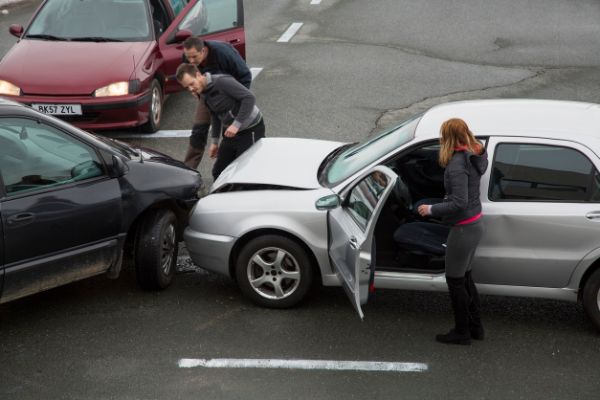At Maison Law, we stand up for the rights of car accident victims throughout California.
Car accidents have significant and wide-ranging consequences. Whether it’s you or a loved one facing such unfortunate incidents, injuries are almost inevitable. What’s more, as the severity of the car accident increases, so does the likelihood of it turning fatal. Regardless, understanding your options is crucial. Contact us today for a free, no-obligation consultation if you’ve been in a car accident in California.
Which States Experience the Most Car Accidents?
The risks associated with car accidents are amplified in states where infrastructure and emergency services lag behind because of any number of factors. Still, there’s significant data out there that shows just how wide-ranging car accidents are across the nation. In order to more fully understand the issue, though, it’s important to look at things that can impact the data:
- Number of drivers
- Number of vehicles and miles driven
- Resources devoted to tracking and compiling accidents
Considering this, data from CARFAX found that the following states had the most car accidents per 1,000 registered vehicles nationwide:
- Georgia
- Kentucky
- South Carolina
- Louisiana
- North Carolina
- Alabama
- Rhode Island
- New Jersey
- Indiana
- Tennessee
Interestingly, California ranked fourth for the fewest number of car accidents per 1,000 vehicles. This is despite the fact that California has the single largest population in the entire country. While this data is indeed telling, what becomes the most important thing–regardless of the state you’re in–is how to properly respond if you’re in a car accident.
How to Respond to Being in a Car Accident
One of the most unifying things about a car accident is what you should do in the aftermath. While every state has its own unique laws, most of–if not all of them–allow injury victims to file a claim against the person that’s responsible. But in practical terms, knowing how to properly respond–knowing what to do–after a car accident is extremely important to how the process plays out.
So, if you’re in a car accident, here’s what you need to do:
- Get to safety and get medical care – Prioritize your safety above all else. In case of injuries, call for an ambulance to get medical care.
- Move your vehicle to the side of the road – If you’re able, move your vehicle to the side to avoid additional accidents.
- Exchange information – Exchange contact and insurance details with the other parties involved in the accident.
- Document the scene – Take photos and videos of the accident scene, showing vehicle damage and pertinent road signs, and any other visual evidence that can help your claim.
- Call the police – Inform the police about the accident, especially if it involves injuries, substantial damage, or uncooperative drivers.
- Get further medical attention – the adrenaline will be flowing after the accident, so some injuries might not show up right away. Once you’re able to leave the scene, get further medical care.
- Notify your insurance company – You can start the claims process by notifying your insurance company about the accident.
- Keep records – Retain all pertinent documents that come from the accident, including medical bills, repair estimates, and communication with insurance providers.
Following these steps after a car accident is extremely important to your legal options. That said, part of the process is knowing what types of accidents you could find yourself in.

What Are Some Common Types of Car Accidents?
Throughout the country, another unifying factor about car accidents are the various types of accidents that can happen to you. Based on our experience in assisting car accident victims, here are some of the most common types of accidents we see:
- Single-vehicle accidents – These occur when a car crashes or encounters trouble without involving another vehicle, such as hitting a tree, guardrail, or veering off the road.
- Multi-vehicle accidents – In these incidents, more than one vehicle is involved, potentially resulting in complex fault determination.
- Sideswipes – A sideswipe occurs when one car’s side collides with the side of another moving in the same direction, akin to a grazing impact.
- Rear-end collisions – In these situations, one car crashes into the back of another, often happening when the front car stops suddenly.
- Commercial truck accidents – Involving large trucks or commercial vehicles, these accidents can cause more damage due to their size and weight.
- Motorcycle accidents – These happen when a motorcycle collides with another vehicle or object, with the potential for severe injuries due to limited protection.
- Bus accidents – Involving buses in crashes, these incidents can lead to injuries for multiple passengers due to the vehicle’s capacity.
- Rideshare accidents – Involving vehicles from services like Uber or Lyft, these accidents may have additional insurance considerations compared to regular car accidents.
- Pedestrian accidents – When a vehicle strikes a person walking or crossing the road, it’s classified as a pedestrian accident, posing significant dangers to the pedestrian.
- Bicycle accidents – These occur when a car or other vehicle collides with a bicycle, presenting risks to the cyclist due to limited protection.
Regardless of the type of car accident, the likelihood of sustaining injuries is high. Some accidents may result in more severe injuries than others, and understanding the potential outcomes will better prepare you if you find yourself in one of these unfortunate situations.
Experience When You Need It–After a Car Accident
At Maison Law, we have the experience and dedication that you need after a car accident in California. We’ll explain your options, and then stand up for your rights throughout the insurance or legal process. You’re not alone, and we can help you. Contact us today to set up a free consultation to learn more.

